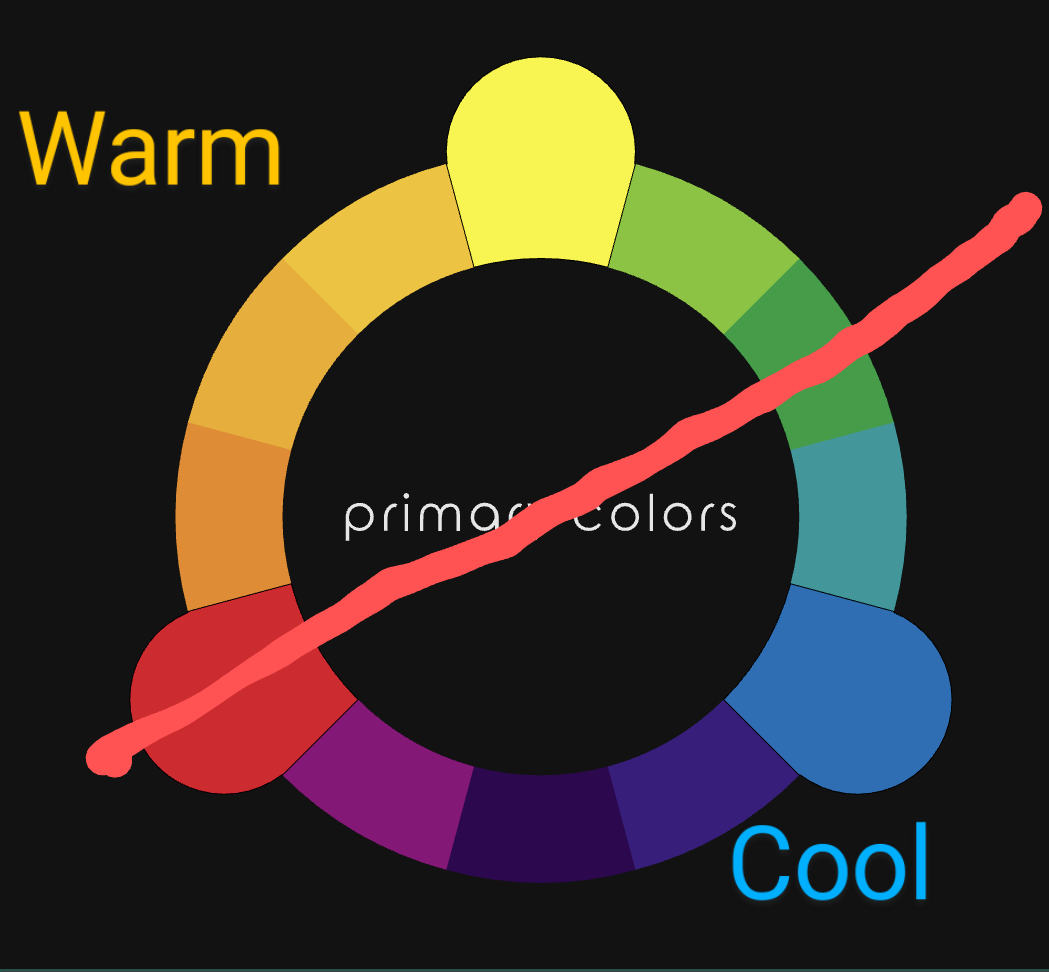Thought I would take a minute to share some color theory that I find fascinating, and a technique that I enjoy.
Lets start with the basics
Almost every color you see can be made from the primary colors. Red, yellow, blue.

light or shadow
Squeeze any color out of the tube, mix half with a little white and the other half with a little black. Put the light on top of the dark and you now have light and shadow of a color. To take it a step further when adding white, add a little of the color up the wheel. For example. A leaf is green, shaded leaves - green and a little black, leaves in light, green + white and a little green yellow as it comes to light. With this you can move up or down the color wheel with light and shadow.
The earth colors are already muted (shadows) of corresponding colors. Yellow- yellow ochre, Thalo blue- Paynes gray. Etc.
Warm light creates Cool shadows and cool light creates warm shadows.
Color is relative. A warm color may appear cool when placed next to a warmer color and vice versa.
Eyes will focus where your biggest contrast is.
Now on to technique.
I have been challenging myself to go through the series with limited palettes using the color of light as the mother color. So again we go back to the color wheel.
Take a blue and a red. Mix them across, so you should now have a blue, blue violet, violet,red violet, red color piles. Begin mixing each color down with the color of the light. For depth, add white.
With a blue, red, and a yellow as a light, you can capture most colors. If you want to change the atmosphere you could change the light to an orange yellow, which will mute the greens. You could move it to yellow green, and mute the orange range. I recommend a book, Nature's basic color concept by one of my favorite artists Merlin Enabnit. He also has some old Walter foster books that are fun.